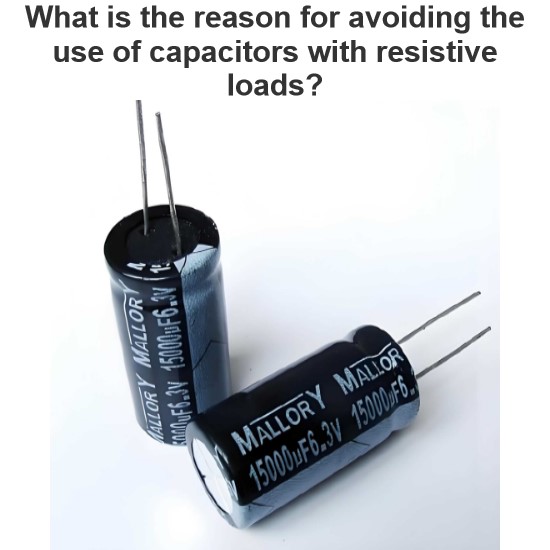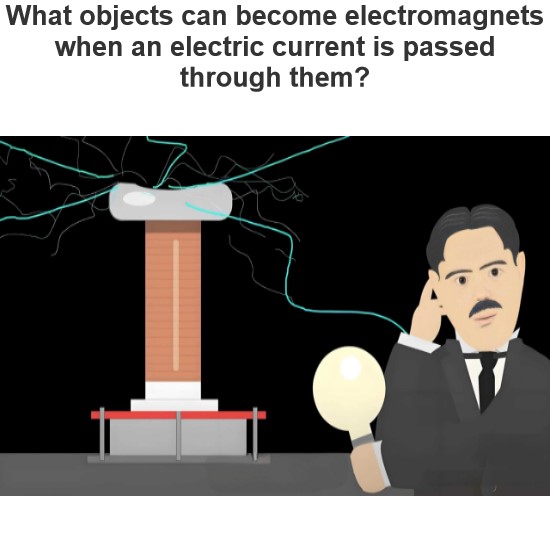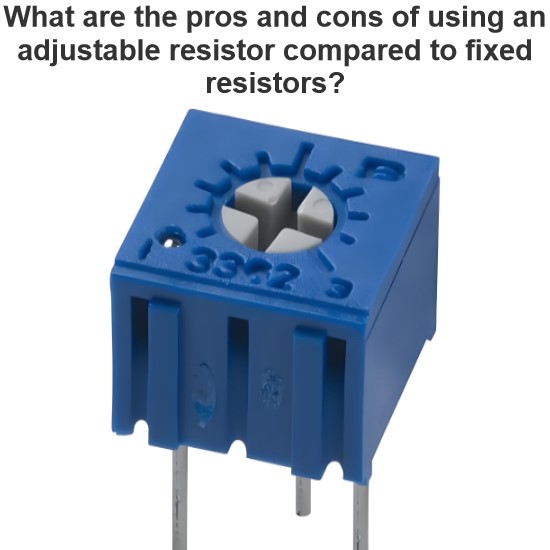What is Shunt Resistor and How Does it Work?
In several electrical and power applications, the measurement of current flow is essential.
Hence, current measurement is commonly required for monitoring and controlling applications.
Depending on the kind of application, many types of current sensors with specialised current sensing technologies are available to detect (or) measure current flow.
A current sensing resistor, also known as a shunt resistor, is the most prevalent method to measure current flow in any application.
This post describes shunt resistors’ operation and applications.
What is Shunt Resistor?
A shunt resistor is a component that generates a low-resistance route to direct the majority of the electric current flow through the circuit.
A shunt resistor is often fabricated from a material that has a low temperature co-efficient of resistance. As a result, this kind of resistor has an exceptionally low resistance value throughout a wide temperature range.
Shunt resistors are often used in ammeters, which measure current. The shunt resistance in an ammeter is linked in parallel. A series connection is made between an ammeter & a device (or) circuit.

Construction of a Shunt Resistor
This resistor may be constructed using extremely thin copper wire, although its size and length are mostly determined by the needed resistance. This resistor’s resistance will determine the ammeter’s range.
Copper wire with a 2.59 mm diameter (or) 10 AWG gauge has a resistance of 0.9987 ohms per 1000 feet when used.
Thus, this resistance may vary according on the grade of the copper wire. Thus, examine the resistance before to use.
To calculate the needed wire length for a given shunt resistor values, the following following expression may be used.
Length of wire (or) Wire length = (Required shunt resistance)/(Resistance per 1000 feet)
Ex: If require a shunt with a resistance of 0.5 m and copper wire with a gauge of 10 AWG, enter the following numbers into the calculation.
Length of wire (or)Wire length = 0.5 / 0.9987 = 0.5 ft
Function of a Shunt Resistor
This resistor operates by providing a path with reduced resistance to the flow of electricity. This resistor has a lower resistance and is linked in parallel to an ammeter or other current measurement device. When the resistance & voltage are known, this resistor calculates the current using Ohm’s law.
Hence, to measure the voltage across a resistor, calculate the total device current using the following ohm’s law equation.
I = V/R

Measurement of Current using a Shunt Resistor
Assume an ammeter with ‘Rm‘ resistance and ‘Im‘ current measurement capability. In order to widen the ammeter’s range, a shunt resistor such as “Rs” is connected in parallel with it.
Where,
‘Rs‘ -Shunt resistance,
‘Is‘ – Shunt current, and
‘I’ – Measured circuit current (or)Total load in the circuit
I denotes the whole current delivered by the source and separates it into two channels.
In accordance with KCL,
I = Is + Ia ————(1)
Is = I-Ia
Where,
‘Is’ – Flow of current through-out Rs resistance.
‘Ia’ – Flow of current through-out Rs resistance.
The shunt resistor Rs is merely linked in parallel with the resistor Rm. Hence, the voltage drop between these two resistors is equivalent.
Vs = Va
Is Rs = IaRa
From equation (1), Is =I-Ia
(I-Ia)Rs = Ia Ra
IRs-IaRs = IaRa
IRs = IaRa+ IaRs
IRs = Ia (Ra+ Rs)
I/Ia = (Ra+ Rs)/ Rs
N = 1+Ra/Rs
Where ‘N’ is the ratio between the total current (I) to be measured and the full-scale current deflection, ‘Im‘ is the multiplication power of the shunt.
Since this resistor is used within the ammeter to calculate the incredibly huge current, the only way to connect resistor to the ammeter circuit in parallel.This ammeter is the current measurement instrument. Using the ammeter’s pointer, it is possible to detect the direction of current flow inside the circuit.
I = V/R
Types of Shunt Resistor
Different types of shunt resistor are,
1). DC Current Shunt Resistor
2). Powerful Shunt Resistor
3). High Power Low Ohmic Shunt Resistor
1). DC Current Shunt Resistor
A DC current shunt resistor is a specialised resistor used mostly for measuring large currents. This resistor is linked in series with
Heater,
DC motor,
Plating bath,
Battery charger, and
Smelting pot line.
This kind of resistor is primarily used to send a millivolt (mV) output to a meter (or) other instruments whose output is proportional to the shunt’s current flow.
2). Powerful Shunt Resistor
The majority of high-power shunt resistors consist of a metal alloy element soldered to the tinned copper terminals. These resistors are appropriate for a variety of applications, including
Battery management systems,
Current sensing on hybrid and electric cars,
Power modules,
Industrial,
Frequency converters,
Voltage division,
Current sensing in welding equipment, and
Busbars.
3). High Power Low Ohmic Shunt Resistor
A high-power, low ohmic shunt resistor is used for the current sensing in a variety of applications with enhanced power needs such as
Industrial equipment and
Automotive systems.
In current-detection-based applications, shunt resistors are often employed to detect overcurrent situations (or) residual battery levels.
Based on the material employed, shunt resistors are divided into four categories:
Carbonshunt resistors,
Ceramicshunt resistors,
Metal alloyshunt resistors, and
Wire-woundshunt resistors.
4). Carbon Shunt Resistor
Constructing a carbon shunt resistor involves combining finely ground insulating material with carbon material and then binding the mixture together using a resin.
5). Ceramic Shunt Resistor
Ceramic shunt resistors are constructed out of
High-temperature,
Solid,
Resistive ceramic materials,
and they have metal contacts that are attached to the ceramic.
6). Metal Alloy Shunt Resistor
Metal alloy shunt resistors consist of at least two metallic components.
7). Wire Wrapped Shunt Resistor
Wire wrapped shunt resistors are constructed by wrapping thin wire around a ceramic rod.
Shunt Resistor Parameters
Shunt resistor’s primary characteristics are
Resistance,
Power rating,
Tolerance and
Temperature coefficient.
1). Resistance
The resistor value is a necessary aspect for a shunt resistor, since it determines how much voltage will drop during the current flow.
So, from the position of the current sense amplifier, this value may be easily established. The resistor value of this amplifier may be chosen based on the largest current flow and the highest input voltage. But the resistor’s power rating will increase, which will increase heat dissipation.
In the current sense resistor circuit, resistor is linked in a current-carrying lane and the voltage drop across the resistor may be monitored using a current sense amplifier.
2). Power Rating
The following formula may be used to easily calculate the shunt resistor’s power dissipation:
Power dissipation(Pd) = V x I
In the preceding equation,
‘V’ – Voltage and
‘I’ – Current.
Because the voltage drop (Vd) across a resistor can be calculated using Ohm’s law, the following formula may be used to calculate the resistor’s power dissipation.
Power dissipation (Pd) = I2R
And therefore, a resistor with a low resistance value may create less heat and remove the need for an additional heat sink.
This resistor’s multi-ohm rating levels are typically adequate and provide minimal power dissipation at maximum current flow.
This resistor’s power dissipation may also be identified by its PCR (Power Coefficient of Resistance) value, which separates the power dissipation values for various resistor values.
3). Tolerance
The tolerance of the shunt resistor is an additional vital characteristic for the resistor’s detecting accuracy. Standard resistors often have tolerances of 5%, 10%, (or) even 1%. Hence, a 10 Ohm resistor with a 10% tolerance will have a resistance value between 9 and 11 Ohms.
Tolerance is a critical characteristic to consider when the output of an application is highly reliant (dependant) on the detected value. However, in the majority of applications, resistor tolerances are not significant.
This resistor’s tolerance values vary from 1 to 0.1%, however the accuracy is required is entirely dependent on the application’s specifications; the resistor must be chosen based on this parameter.
4). Temperature Co-efficient
The Temperature Coefficient, or TCR, of the shunt resistor is an additional parameter used to calculate how much resistance will change as a result of a change in the resistor’s temperature.
It is a highly significant parameter in any resistor application. It is relatively difficult to get a rating of thousands (1000s) of ppm/o Celsius for a typical 1% resistor, but it must be much lower for a resistor with a maximum current flow; otherwise, the resistor’s power dissipation will be greater, which will increase its temperature.
Due to the rising temperature of the resistor, the value of the resistor might vary and likely result in inaccurate readings.
The temperature coefficient value is mostly determined by the resistor’s tolerance, power, and physical dimensions.
There are several kinds of shunt resistors with very low TCR values due to the usage of metal-foil components in the construction of these resistors.
Advantages of Shunt Resistor
The resistor protects the circuit against overvoltage because a circuit is harmed when excessive current flows through it. Hence, the maximum current flowing through the resistor will trigger the fuse.
It is used to reduce noise.
This resistor’s current sensing technique is relatively easy to implement.
It is capable of AC & DC measurement.
Disadvantages of Shunt Resistor
There is no requirement for galvanic isolation.
A voltage drop is possible.
Within this resistor, power may be dissipated.
Applications of Shunt Resistor
A shunt resistor is used to prevent overvoltage in an electrical circuit.
By detecting the voltage drop across the resistor, this resistor is used to determine AC or DC current.
It is used to overcome defective devices. When many components are linked in series and one fails to function, the complete circuit will be disconnected. In this condition, the shunt resistor ignores the failed component and the circuit continues.
A shunt resistor and capacitor are used in a circuit to prevent high-frequency noise.
It is used in circuits for overload protection control, including power supply.
Typically, these resistors are employed in current measurement devices such as ammeters.
Frequently Asked Questions
1). What is the operation of a shunt resistance circuit?
In the field of electronics, a shunt resistor is a component that makes a path through the circuit that has a low resistance for electric current to follow so that it can bypass another part of the circuit. The name “shunt” comes from the term “to shunt,” which means to deviate from the intended path (or) go in a different direction.
2). What is shunt resistance?
The slope of the dark current vs the applied voltage (V) to the detector is known as shunt resistance (Rsh).
3). What is the difference (distinguish) between a shunt resistor and a resistor?
The major difference between a normal resistor & a shunt resistor is the temperature co-efficient of thermal EMF.The thermal EMF is ignored in normal resistors, but in shunt resistors, two different conductive materials generate a variable voltage depending on the temperature.
Statement: Respect the original, good articles worth sharing, if there is infringement please contact delete.
As an electrical engineer with 5 years of experience, I focus on transformer and circuit breaker reliability in 110/33-11kV and 33/11kV substations. I am a professional electrical engineer with experience in transformer service and maintenance.




